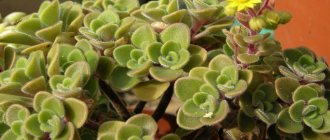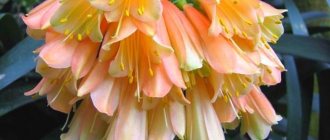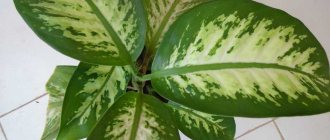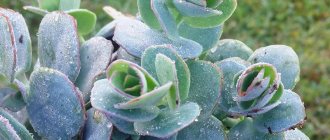The plant Ripsalidopsis is a representative of a fairly large family of Cactaceae. Such an unusual name “ripsalidopsis” translates as “wicker bush”. This plant is often also called Hatiora.
In nature, this cactus can be found in the tropical latitudes of South America, and it prefers to grow in the thicket of the forest. This plant is most widely distributed in Ecuador and Brazil. Rhipsalidopsis is an epiphytic plant, which means that it parasitizes large trees. However, sometimes a cactus grows into moss, and its further life goes on independently.
This plant is often popularly called the “Easter cactus.” This is directly related to the fact that its flowering is observed in spring, or more precisely, in April and May. It is at this time that Easter falls, which is one of the main holidays of Christians.
Schlumbergera or Ripsalidopsis?
They are often confused, although they are two completely different plants. You need to be able to distinguish between them, this will reduce the likelihood that someone will mistakenly buy something that was not what they had planned. It is important to remember that there are basic signs that are easy to notice:
- Schlumbergera, also known as “Decembrist,” blooms in January;
- Different dormant seasons;
- The inflorescences of Zygocactus, another name for the winter cactus, have no scent;
- In ripsalidopsis, the leaf plates are smoothed along the edges, while in the “Decembrist” they are jagged (photo of leaves of ripsalidopsis and zygocactus).
Difficulties in growing
An Easter cactus may die as a result of disease, pest attack, or improper care. Flower growers note the following problems and share ways to solve them.
- Stem segments fall off. This can happen if you overdo it with moisture or fertilization. And also if the room is too cold. The way out of the situation is to create comfortable conditions for the plant and observe moderation in everything.
- The stems turn pale or turn brown. Most often this indicates sunburn. You need to remove the flower from the “dangerous” windowsill.
- A spider mite has appeared. Its characteristic feature is dots and cobwebs on the underside of the leaves. This pest dies after local treatment of the plant with alcohol or hot water.
- Mealybug attacks. It affects the root system and the upper part of the cactus. It can be identified by a coating similar to a dense cobweb. The only way to escape from it is by replanting it in new soil and treating the plant with antiseptics. A weak solution of potassium permanganate is suitable for the roots, and special preparations for the stems.
- The scale insect is parasitic. These parasites look like moving specks. Traces of their activity are brown or beige growths on segments of ripsalidopsis and a change in the color of the soil. Treatment is treatment of the affected areas with special chemicals.
It is necessary to treat plants with insecticides only while wearing rubber gloves, observing the exact dosage of the drug and the method of its use indicated on the packaging.
Plant species
There are many variations of this shrub, descriptions of the flower, so everyone will find what suits their personal taste. The most basic varieties are listed here:
Ripsalidopsis Gartner
The shrub is low - about 20-25 centimeters in height, its segments are longer than those of other species. It lends itself well to growing at home; beginners are advised to take it.
In addition, this variety has many varieties, so the choice is huge:
- 1.1. Yvonne Pelham
- 1.2. King's Dream
- 1.3. Evita
- 1.4. Nina
- 1.5. Sirius
- 1.6. Capella
- 1.7. Leach
Rhipsalidopsis pink
It has deep green stems with small segments. The segments can be smooth or slightly ribbed - it depends on the greenest friend. The inflorescences of the shrub grow about 5-6 centimeters and have a pink tint that is pleasant to the eye.
Ripsalidopsis Aurigo orange
Very similar to zygocactus due to the shape of its segments. It begins to bloom after the others; the inflorescences have a bright orange color, sometimes bordered with red along the edges of the petals.
Rhipsalidopsis Andromedia (Ripsalidopsis Andromeda)
Unlike many other species, it is bred artificially. Very beautiful when in bloom. Suitable for lovers of beauty and aesthetics.
general information
Behind the complex name of ripsalidopsis lies a very simple concept - a wicker bush. This is a South American forest cactus that in its natural environment parasitizes large trees. We also call it the Easter cactus, because of the time of its flowering.
Ripsalidopsis grows in the form of a bush up to 30 cm high. Its flat, ribbed shoots are very elastic and fleshy to the touch. Each consists of separate oval segments up to 6 cm long. There are a lot of such shoots, and buds appear on their tops.
Shoots of ripsalidopsis can produce aerial roots, due to which the cactus stays on trees in nature. So you can even support Ripsalidopsis. The star-shaped flowers are dense and showy, semi-double. Up to 3 pink buds bloom on one shoot.
Photo: fotostrana.ru
Ripsalidopsis care
Caring for a rhipsalidopsis plant at home will require patience and perseverance. However, if you do everything correctly, the result will not be long in coming.
Location in the house
Find a window in the apartment facing north or southeast. If this is not possible, then you can place it in any place at a distance of about a meter from the glass. If the plant is on the north side, then from time to time it needs to be turned in different directions towards the sunlight.
But, an important point, if the bush has buds, under no circumstances should it be touched, otherwise all the inflorescences will fall off. In warm summer months, ripsalidopsis can be taken out to the balcony, as they love fresh air. But it is important to protect them from rain, strong winds and direct sunlight.
Lighting
Ripsalidopsis do not tolerate direct sunlight, so they should be placed in partial shade. By the way, lighting greatly affects them: they can change color depending on the level of light maintained in the room.
Temperature
They have a hard time withstanding temperature changes and heat. In spring and summer, the ideal temperature for them is 18-20 degrees, in the fall it should be lowered to 10-12, and from October to February, maintain 12-15 degrees. This is required to help the plant bloom next season.
Watering and humidity
How to water a flower is one of the most common questions. The cactus loves abundant watering during flowering. Even if the soil seems dry in the area of 1-2 centimeters in depth, it should be moistened with soft, filtered water.
But such careful care is needed only in spring: after the end of the flowering period of the bush, you need to reduce watering. Water should not be left in the pan after watering, this will lead to the death of the roots.
As for humidity, it needs to be maintained at a high level: spray near it in the morning and evening, and in hot and stuffy weather, organize warm, gentle watering. While the flower is dormant, it is enough to wipe the petals from dust with a damp cloth.
The soil
Soil for ripsalidopsis needs to be purchased at a flower stall. Particular attention is paid to the acidity of the substrate - it should not exceed pH 5.5-6 units, the substrate itself needs to be loose, containing large organic pieces, but if it is possible to make the substrate yourself, then it is better to do this.
For it you will need:
- 1 share of turf land with a small clay content in it;
- 1 share of fine gravel;
- 2 shares of garden humus;
- Some crushed charcoal;
- Superphosphate.
Mix all this and the substrate is ready.
Top dressing
They are not particularly whimsical about this. Any fertilizer for cacti that can be found in a flower shop will do. It is recommended to fertilize once every six months.
Transfer
You need to replant ripsalidopsis once a year for the first three years, then once every two to three years is enough, since its intensive growth ends. It is better to replant immediately after flowering and before the dormant period begins.
Flowering phase
It mainly begins in the spring and does not last a long period of time. It happens that the cactus does not bloom at all. The reason for this may be a lack of nutrients in the soil, improper lighting, excessive watering, or an uncomfortable temperature for the shrub.
Bloom
Ripsalidopsis begins flowering in the spring. Some species and varieties have a long flowering period. Others bloom for only a few days, but very profusely. Sometimes it happens that a cactus does not grow and does not produce buds for flowering - this means that it did not have enough lighting or the soil substrate was poor in nutrients. If you notice this in early spring, try changing the place where there is more light and feeding the plant. The cactus may bloom, but later than its usual schedule. If the buds appear, you cannot turn or move the plant - in this case, it may drop the buds, and you will not see flowering.
Most often, the lack of flowering is due to the lack of a proper rest period in winter. Violation of the temperature regime, excessive watering, all this leads to a sad result.
Reproduction
Can be done in several ways.
The first is cuttings. A familiar and simple method to all of us. For the cutting, choose a stem with two or three segments; it must be immediately placed in the soil and then put in the shade.
The second is seeds. You can get them at any botanical market. You cannot wet them and store them in a wet cloth, as is done with many plants. In order for the seeds to germinate, it is enough to place them in a peat mixture, maintaining the soil at a certain level of moisture. As soon as the seedlings begin to appear, they can be transplanted into pots.
And the last, most difficult method is vaccination. Without experience and knowledge, this procedure will not be possible, so it is better to contact a specialist.
Rooting cuttings
A faster and easier method compared to germinating seeds. Material for germination is taken during transplantation, which is carried out after flowering. Select longer shoots and tear off their tops, 5-6 cm long. The cuttings are dried on an open balcony for several days. The detachment site on the mother flower is treated with crushed chalk or ash.
Planting shoots are sprinkled with root stimulating powder, then rooted in small containers with a mixture of humus, river sand and peat. It is pre-moistened with a spray bottle. Pure sphagnum moss will also work. The cuttings are buried so that they grow vertically. Sometimes thin wooden supports are used.
Rooting cuttings in separate containers
For normal rooting, bright, diffused light is required, as well as an air temperature of +22 degrees. There is no need to cover pots with seedlings with polyethylene. It is enough to simply moisten the soil as it dries. Rooting usually occurs within a week. Then the established healthy shoots are transplanted into separate pots and provided with partial shade for 5 days.
Diseases and pests
There are many reasons why rhipsalidopsis may not be doing well. This could be fungal or bacterial diseases, it could be improper indoor care, pests, and more.
Most often, the plant becomes a victim of spider mites, mealybugs and other parasites. They are located on the bottom of the sheet, so you won’t notice them at first glance.
A splash of laundry soap will help against a small number of parasites: wipe the damaged side with it and, after checking the soil for pests, cover it with something for a while. But if there are still a lot of insects, then it is better to use special means.
Ripsalidopsis are moisture-loving, so they are at risk of fungal diseases. It is very easy to notice that a plant is infected: slimy, gray spots will appear on its leaves. If the fungus has not yet grown, then you can treat the leaves with a fungicide, but in case of advanced disease, it is better to select intact shoots and root them.
However, a person himself may be responsible for the death of his green friend. Excess moisture can negatively affect the root, so if outwardly there are no symptoms described above, you should check the lower part of the bush.
Rotting roots need to be cut off, as they are a threat to the whole thing, and then the cactus must be transplanted into new soil.
Transfer
Young plants are replanted every 12 months. Adults - as the roots grow. Usually once every three years or less.
- Time. The best moment for replanting is considered to be the end of spring or the beginning of summer, when the plant has already bloomed. But we will allow another period before the onset of “hibernation”.
- Pot. Since the roots of the cactus are poorly developed, the flowerpot should be spacious, but not deep. If the flower has grown, choose a larger pot.
For replanting, it is recommended to carefully remove the plant and soil from the pot. Place a small drainage at the bottom of an empty flowerpot (old or new). Sprinkle a thin layer of suitable soil on top and moisten it. Remove old soil from the plant with your hands. There is no need to wash the roots. If there is any soil left on them, brush it off with a soft brush. Carefully examine the roots. If necessary, remove damaged or rotten parts with clean scissors. Then place the cactus in a flowerpot and add enough new soil to completely cover the root system. All green stems should be on the surface. Press lightly and pour over.
After such a procedure, ripsalidopsis needs to be given time to rest. It should be removed for a week in a quiet, shaded place without drafts. It is better not to water and fertilize now.
Cactus selection
This should be taken very carefully. You need to choose a healthy plant, so before purchasing, carefully inspect its leaves for spots and pests. If the purchase takes place in winter, then pay special attention to the general appearance and condition of the plant - the bush should look stable and healthy.
It is possible that at first the cactus will not feel well in the new place, but this is normal, since moving is stressful. Well, and most importantly, you should choose what you like so that leaving is a joy.
Trimming
When replanting ripsalidopsis, old branches are pruned. It is important to do this during the dormant period, before young buds begin to form. Flowering will not begin if the bush is pruned in early spring. This procedure is only necessary in winter. It stimulates the growth of new branches. Usually, in place of 1 cut stem, 3-4 new ones appear, which in a year will set large buds. Pruning helps to form the correct crown of the flower; it rejuvenates and revitalizes it. Lignified shoots are cut off with pruners or scissors, and young damaged segments can be easily broken off by hand. They can be used for reproduction.
Young segments of ripsalidopsis, ready for rooting











